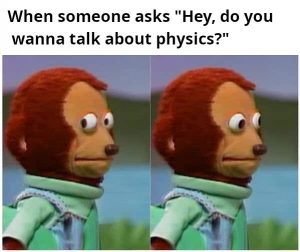Dark matter, quantum mechanics, neutrinos, all these names probably already make you feel quite confused, even if you have heard about them before. What’s more, you can think now “what do I need to know about them? Why should I be interested in this topic if I can go out and build a snowman or scroll social media for the next three hours?”. Fortunately, we have an answer for that question. Let’s start with some simple explanation: what exactly are quantum sensors?

Quantum sensors are detectors, which work not really different than microscopes, telescopes or.. our eyes! However, their characteristic is that they can see and measure things much smaller than any human could ever do. How do they work? You probably already guessed by their name – yes, there are using so-called “quantum mechanics” and more precisely – its features.
Try to imagine it: as you use your senses, like sight or touch to recognize and understand the world surrounding you, the same do quantum sensors – but instead of ears or eyes, they use atoms and their quantum properties. They can recognize even really small changes in their environment, such as magnetic field or, what we should focus on, energy.
But how is it really related to this mysterious “neutrinos”? And how people can use them in daily life? Okay, maybe we should start with Dark Vader of our Universe – dark matter. People, even scientists, don’t really know what it is. To describe it, we need to know its properties – we have to use our sensors. By measuring the differences in energy, scientist can mathematically express its real structure and try to predict how does this “matter” behaves – and if it is a matter at all.
And this knowledge might be very important for the further exploration of our galaxy. Can you imagine? Knowing properties of this one thing, could significantly change our view of the Universe and provide many information about stars millions kilometers away! Isn’t it fascinating? And from this point you can already imagine how many “impossible” aims humanity could achieve, things most of us have seen only watching science fiction movies.
Now we should focus a little on details. Let’s assume that our dark matter is a real matter. So, shouldn’t it be made of some small particles? Such as normal matter like you or the chair you are sitting on is built of atoms? Good question, and quantum sensors say definitely yes! The experts already found such particles using, of course, quantum sensors to detect so small changes in energy, that any other machine couldn’t even see!
Okay, if this mysterious cosmic spaghetti is already better known to you, now let’s move on to the another tiny objects – neutrinos. As some of you may remember from chemistry classes there were already some similar name. Yes, you remember correctly – we think about neutrons. But what, apart from the name, is similar about them? So, both are particles, both without charge. However, neutrino is much smaller and lighter, doesn’t really interact with anything and basically, is almost unnoticeable. You can imagine: neutron is like an orange lying on the table. It can fall down, you can hit it, it is quite heavy and has something inside. Neutrino? In this scale it would be rather a speck of dust, something you usually don’t care about at all. Unless you are allergic.
So this “invisible” neutrinos, are so small that measuring them in any way seems impossible. But not for quantum sensors. Most importantly, scientists using beta decays (which you might hear about sometimes in TV, when speaking about atomic power stations) acquire neutrinos and thanks to quantum sensors, approximate their mass. What’s more, they can also detect so-called “cosmic relic neutrinos” which emerge from our space and which can provide another substantial properties of our Universe. These small, “old” particles are like little dinosaurs’ bones, buried underground, just waiting for some bold archaeologists to discover them. Here, quantum sensors are our shovels.

As you can already see, quantum sensors may have more applications than more people can imagine. They not only sound cool – they also do a really cool stuff. And learning about Universe structure or super-small particles with additional history of space are only scratching the surface. By many different methods and multiply methods of using quantum sensors, scientists can measure other things too and make another worldwide discoveries.
Electricity changed our lives. Computers revolutionized our world. And what quantum sensors can do?
References:
Golwala, Sunil R. and Figueroa-Feliciano, Enectali et al. Novel Quantum Sensors for Light Dark Matter and Neutrino Detection. Annual Review of Nuclear and Particle Science 2022 72:1, 419-446. https://doi.org/10.1146/annurev-nucl-102020-112133
Author: Aleksandra Franc

Ola – this is indeed fascinating, and it will be exciting to see what future discoveries are made with the help of quantum sensors!
-Edie